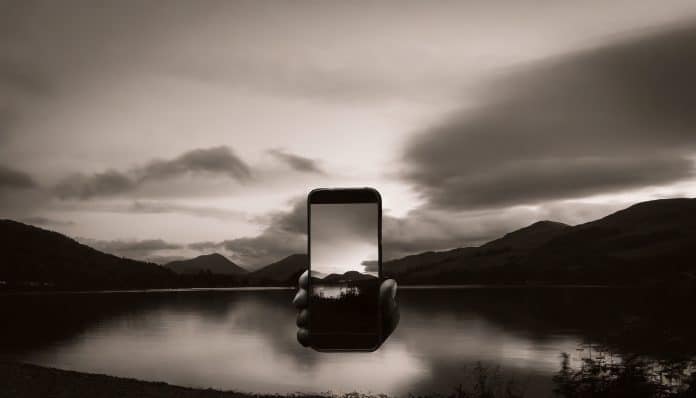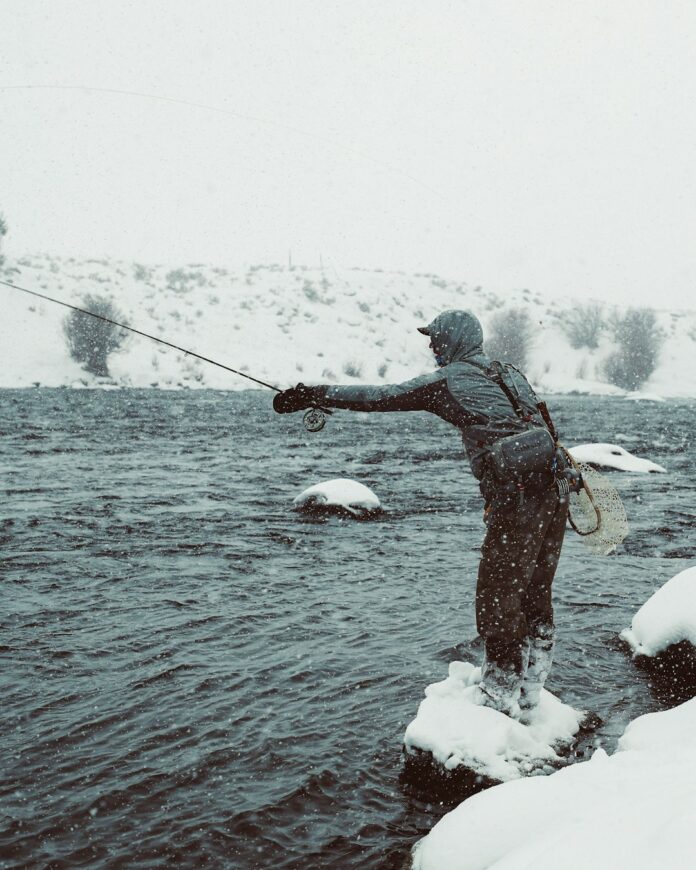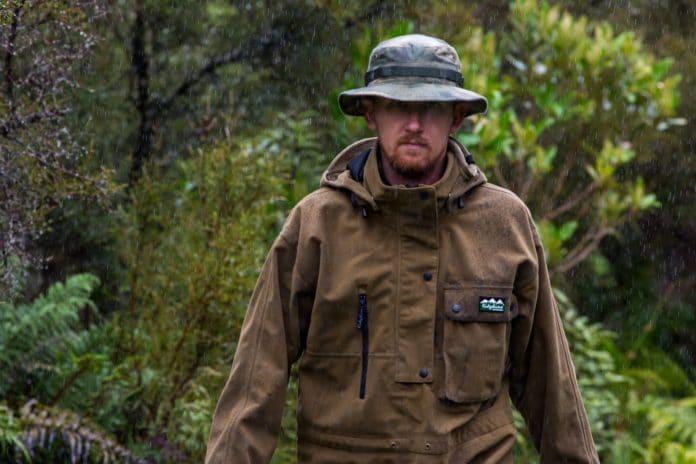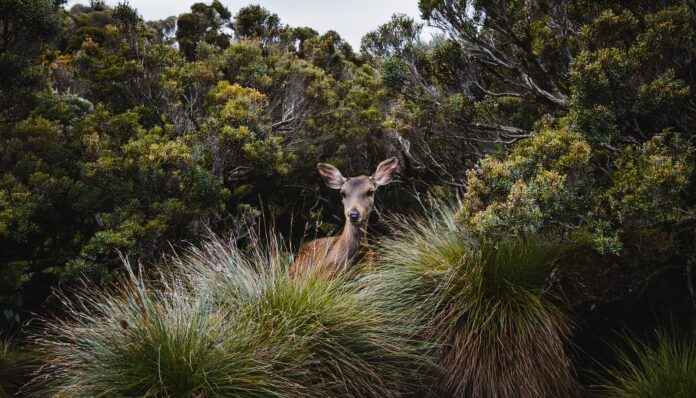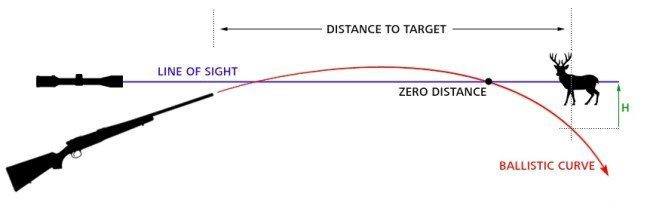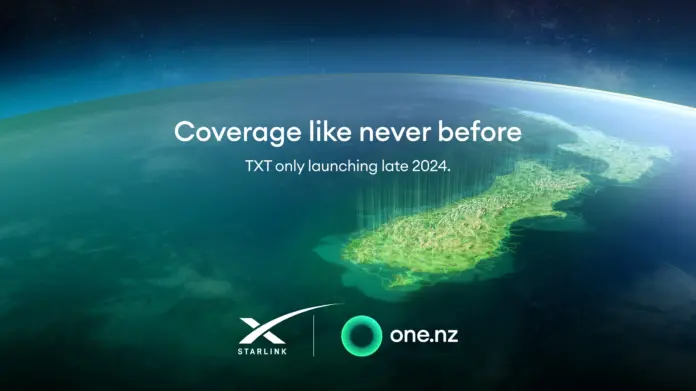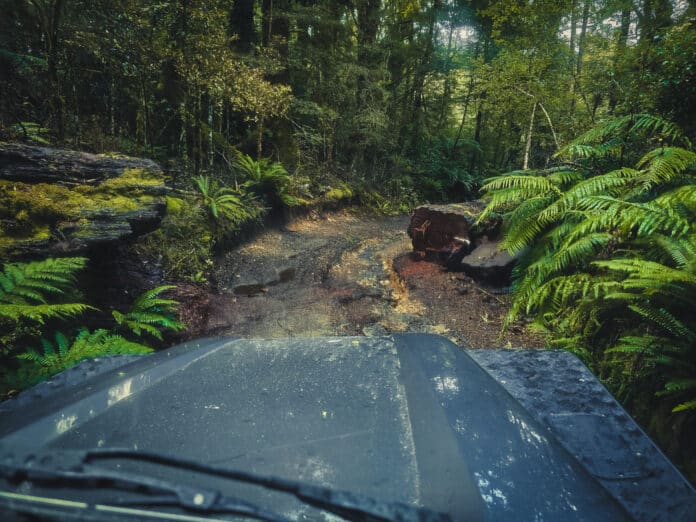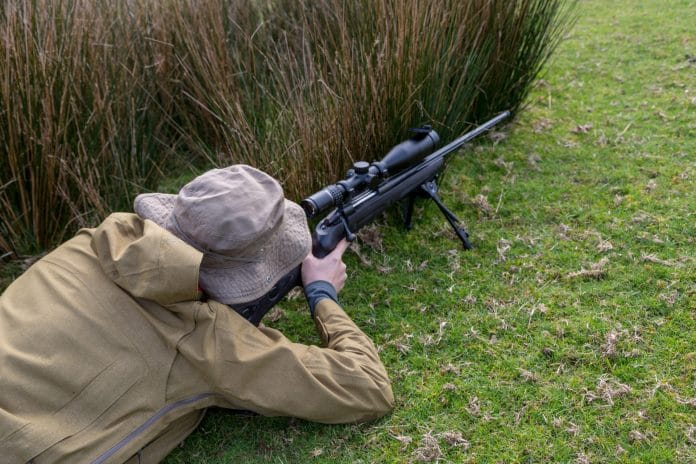Let’s talk about digital detox, shall we? Picture this — you’re in a conversation, buzzing with energy, animatedly discussing your favourite band or the latest book you’ve read, and then you feel it. The all-too-familiar vibration in your pocket, an incoming notification. Your smartphone, the constant companion, beckoning for your attention, successfully throwing you off your game. And then there are those nights, when you tuck yourself in bed, promising ‘just one more scroll on Instagram’, that somehow mysteriously turns into two hours. Sounds familiar, doesn’t it?
‘Upside Down’ Fishing Rod Guides: What You Need to Know and Why They Are Installed That Way
You’ve just purchased a new fishing rod, and the excitement of heading out on the water is coursing through your veins. As you inspect your new gear, you discover something peculiar. The guides — those little loops for getting your line from the reel to the tip of the rod — appear to be installed upside down. It looks ‘wrong’, and you wonder whether it’s an accidental slip-up from the manufacturer.
From Soggy Bottoms to Happy Feet: A Guide to Wader Repair
Discover how to spot and repair leaks in your waders. Want to extend their life and performance? Learn essential care tips to keep them in top condition.
My current choices in Hunting Clothing
Hi Kerry. I’m looking to update my hunting clothing as it is about 15 years old. Looking at getting some trousers and a shirt. Previously have gone with Stoney Creek and had no problems. So my go to would be that. However, there are quite a few more brands on the market these days. For…
Maximum Point Blank Range
Less guessing, more certainty
While modern reticles, ballistic turrets and gadgets make things much quicker and more accessible, things can still get a little hairy when hyperventilating as the biggest Stag of your life slowly starts to walk back into the forest line. It’s not the time to start second-guessing yourself; it certainly isn’t the time to start trying to remember how your ballistics chart relates to your reticle marks.
It’s also certainly not the time to be taking a shot in the hopes that it will hit an animal and disable, hopefully, kill it. That is cruel, unethical, and just plain inhumane.
So, a method of maximising the setup of your hunting rifle, cartridge and scope to ensure you can point and shoot for most of your shooting makes sense. Unsurprisingly, such a methodology exists.
Understanding Maximum Point Blank Range.
Essentially, the maximum point-blank range is where you can hold dead centre on a target and still hit it within a certain predefined distance up or down. Most commonly, this is calculated to correlate with the ‘kill zone’ of the primary target species.
Consider it this way – imagine a rifle centred down a pipe, which has a diameter the size of the vital organs of your target (often said around 6 inches for the smaller deer) (150mm for us metric folk). MPBR is the maximum distance you can hold dead centre on that animal and never hit the top or the bottom of that pipe over that distance.
So, how does this work? Well, first of all, remember that a projectile’s tractory follows a parabolic curve. The projectile (bullet) leaves the barrel heads up over the line of sight, then curves slowly back down to the zero distance. The photo above is an exaggerated example, but it illustrates a point.
So, to then continue the example:
No, not my original diagrams – but then, I will make up the same thing, so I might as well recycle.
In the second image – we can see that the path in the middle has a trajectory that doesn’t pass higher or lower than three inches from the line of sight. This continues further than where the actual rifle zero is set to.
Don't worry - there is plenty more to read.
This means that for every firearm system, there is an optimal zero that will allow us to set and forget the elevation and be comfortable that we will be within a ‘margin of error’ when we centre and pull that trigger.
What do we need to know then?
One significant factor must be decided before we go further into the calculations.
How big is my target ‘kill zone’?
Ah. Good question. The size of a rabbit is very different from that of a Wapiti. So, part of this process is deciding how big to calculate the kill zone for. Within this sizing, we also need to account for the accuracy of the rifle and the shooter.
How big is the boiler room/kill zone of your target species?
If it’s a Red, the boiler room will be about 220mm. You need to add some leeway for that simple fact: you can’t put every single shot on top of each other – certainly not off-hand, while short of breath, having just climbed over a ridge and spotted a deer (be realistic).
If you shoot necks, it’s less; heads, even less (how about we just rule out headshots for rushed shooting altogether, aye, lads?).
All in all, I would allow something like 150mm to cover everything down to fallow size and ensure good shot placement on all the deer.
So, we have our maximum allowable spread distance. Now, we also need to know about the ballistics of the gun we are shooting.
At a bare minimum, the box of ammo you shoot should have enough details. Realistically, I would expect you to have also run your rifle over a chronograph with the ammo you are planning on shooting a live animal with because, again, we are humane, ethical hunters and do all we can do to ensure a clean kill.
Finally, some basic details of the rifle, particularly the sights, are needed.
The maths
Let’s take my Rem700 in .308 – not that I would hunt with it – but I have the load data handy.
It shoots a Lapua 155 Scenar at 899mps (2949 fps). Chrono is a Magnetospeed. The sight height is 5cm above the bore.
I pop over here – http://www.jbmballistics.com/cgi-bin/jbmtraj-5.1.cgi – and start entering things in.
You don’t need to enter everything. Projectile, velocity, sight height, and vital zone radius are all you need. Remember to check ‘Zero at Max. Point Blank Range’ – then hit calculate.
The results will give you all the information you need to set up the MPBR on your rifle. In my case – I get the following:
So, if I set my zero at 233 meters, I can shoot an animal anywhere out to 272 meters and still hit within 75mm of my point of aim. I will still have nearly 2000fps of energy at the maximum distance – so there is plenty to put the animal down.
Then what? How do I set a Zero?
Easy. Go back to our online calculator and uncheck ‘Zero at Max. Point blank range’ then zero the rifle at 100 and use the drop chart! Looking at my example – I will zero to 100, then give myself 7 clicks up (my pick between the 225 and 250 ranges). If I want to take the time and dial up a distance, I can still work from a known 100 zero. If you wanted, you could just use the dial up’s and downs from the original chart – or re-zero the scope after adjusting – whatever will make the most logical sense to you. You don’t want to be second-guessing yourself when faffing with scope dials.
Who can the MPBR system work for?
If you are a hunter that does a mix of bush stalking, into clearings, up into tops and back down again, having your rifle set up this way may be of benefit. Suppose you don’t want to mess with the scope before pulling the trigger and have multiple distances to contend with. In that case, the system will let you set and forget, in the understanding that you will not be able to get the pinpoint accuracy dialling it would.
If you are primarily a bush hunter, then pulling that zero back down to where you shoot might make more sense – it would allow for closer, more ‘picked’ shots where you need to round to go precisely where you aim it. For the mountain ‘long-range’ hunter, you will have the time to figure out an exact ballistic solution and setup for the shot.
So – the MPBR setup isn’t for everyone. However, for many hunters, it provides a simplified method of setting the rifle up to hit the animal without doing too many mental calculations in the field.
Stay Connected Anywhere: One NZ and SpaceX Revolutionize Emergency Text Messaging for Hunters, Hikers, and Boaters
Luckily, there’s exciting news on the horizon. The upcoming collaboration between One NZ and SpaceX promises to revolutionise how we stay connected in these remote areas. Soon, sending text messages directly via satellite will be possible, providing a much-needed lifeline when traditional options fall short. This innovation could be a game-changer, especially ensuring safety during outdoor adventures.
“Connectivity in the wild isn’t just about convenience; it’s about survival. Whether you’re out there seeking solitude or pushing your limits, having a reliable way to communicate can mean the difference between a minor mishap and a major incident.”
In this context, it’s important to consider how this new technology stacks up against existing emergency communication options. Devices like the Garmin SPOT system and Zoleo have long been trusted companions for backcountry enthusiasts. And, of course, carrying a Personal Locator Beacon (PLB) or EPIRB remains a vital part of any emergency preparedness plan. But sending a simple text message via satellite could add an invaluable layer of security and peace of mind.
The Dawn of a New Era: One NZ and SpaceX Unite for Safety
As someone who has spent countless hours immersed in the serenity of New Zealand’s scenic backcountry or the vastness of its surrounding waters, the possibility of seamless connectivity is a game-changer. We’ve all felt that twinge of anxiety, that nagging ‘what if’ when a dense bush obscures the track or the horizon blends seamlessly into the ocean. It’s not just anticipation for a patch of clear sky but the unknown challenges it conceals. With this pioneering collaboration between One NZ and SpaceX, staying connected isn’t just about convenience but safety and peace of mind.
This revolutionary service promises more than just the ability to send a text from the remote corners of Fiordland or the windswept beaches of the Coromandel. It ensures that you’re never truly out of touch with the comforts and assurances of civilisation. Imagine the relief of sending a reassuring message to loved ones during an unexpected delay or reaching out for help when something goes awry. The confidence this brings can not only enhance your adventure but may very well save your life.
Throughout my years of tramping and hunting, I’ve relied on various devices like the Garmin SPOT system and Zoleo to bridge the gap between isolation and the outside world. While they undeniably serve their purpose, the amalgamation of advanced satellite technology from SpaceX and local expertise from One NZ is poised to take emergency communication to uncharted heights. This partnership heralds a new era where connectivity extends far beyond traditional networks, encompassing New Zealanders’ passion for their natural playgrounds.
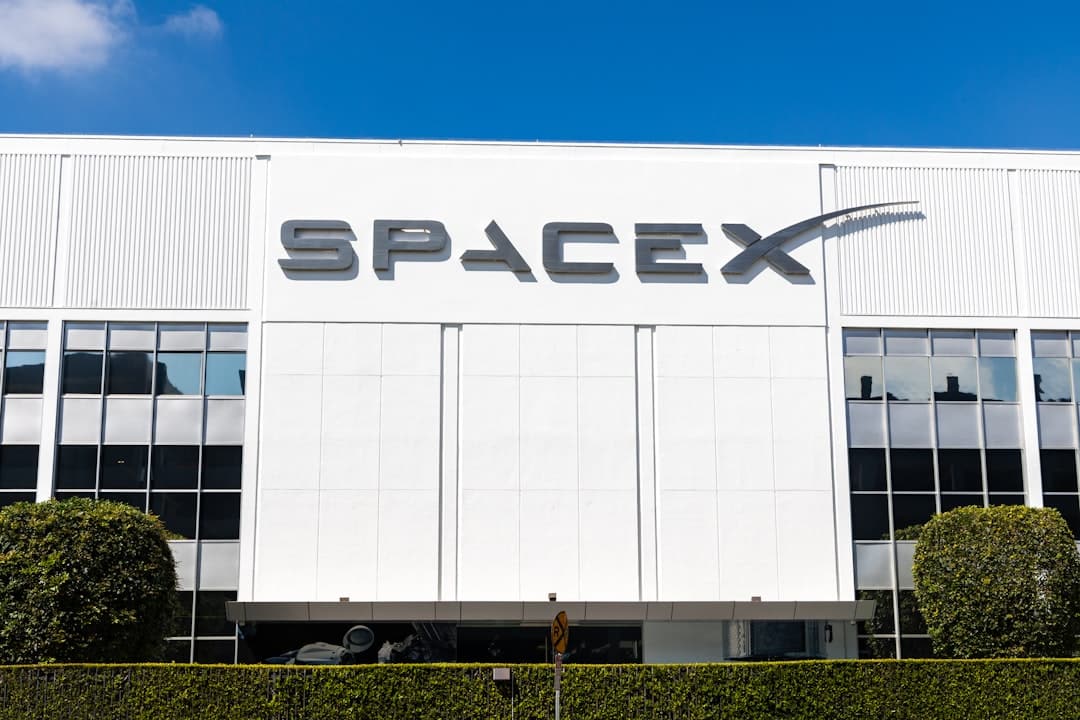
From Mountains to Seas: Seamless Connectivity Anywhere
Being out in the wilderness or on the open water can be an exhilarating experience, a chance to disconnect from the daily grind and connect with nature in its purest form. But what happens when you’re miles into the backcountry, cresting a mountain peak, or adrift in a secluded bay, and an emergency strikes? That’s where seamless connectivity becomes more than a convenience—it’s a lifeline.
One NZ’s collaboration with SpaceX marks a significant leap forward in ensuring that no matter where you are, help is just a text message away. This partnership directly brings the power of satellite technology to our mobile phones, providing unparalleled communication reliability in even the most remote locations.
Adventurers often rely on devices like the Garmin SPOT or Zoleo for emergency communication. These devices have proven invaluable, offering GPS tracking, two-way messaging, and SOS features. The Garmin SPOT, for instance, uses the global Iridium satellite network to transmit messages worldwide and has integrated well with its app landscape for smooth transitions between satellite, cellular, and WiFi connections.
However, the union of One NZ and SpaceX streamlines these functionalities into our smartphones without additional devices. Imagine sending and receiving messages, updating loved ones, or calling for help without fumbling through separate gadgets, all while retaining the same global reach as dedicated satellite communicators.
As someone who ventures off-grid, the peace of mind this brings is invaluable. Yet, it’s crucial to remember that while this advancement significantly enhances safety, it doesn’t replace the necessity of a Personal Locator Beacon (PLB) or an EPIRB. These devices remain the gold standard for emergency signalling, providing instantaneous location data to rescue services. They’re robust, with long battery lives, designed specifically to summon help in critical situations where every second counts.
The One NZ and SpaceX collaboration is a monumental step towards making the wilderness safer for everyone. While it adds an indispensable layer of security, it’s a complementary tool rather than a complete replacement for traditional emergency devices. As we head towards a future of unbroken connectivity, it’s reassuring to know that no matter how far we roam, help is always within reach.
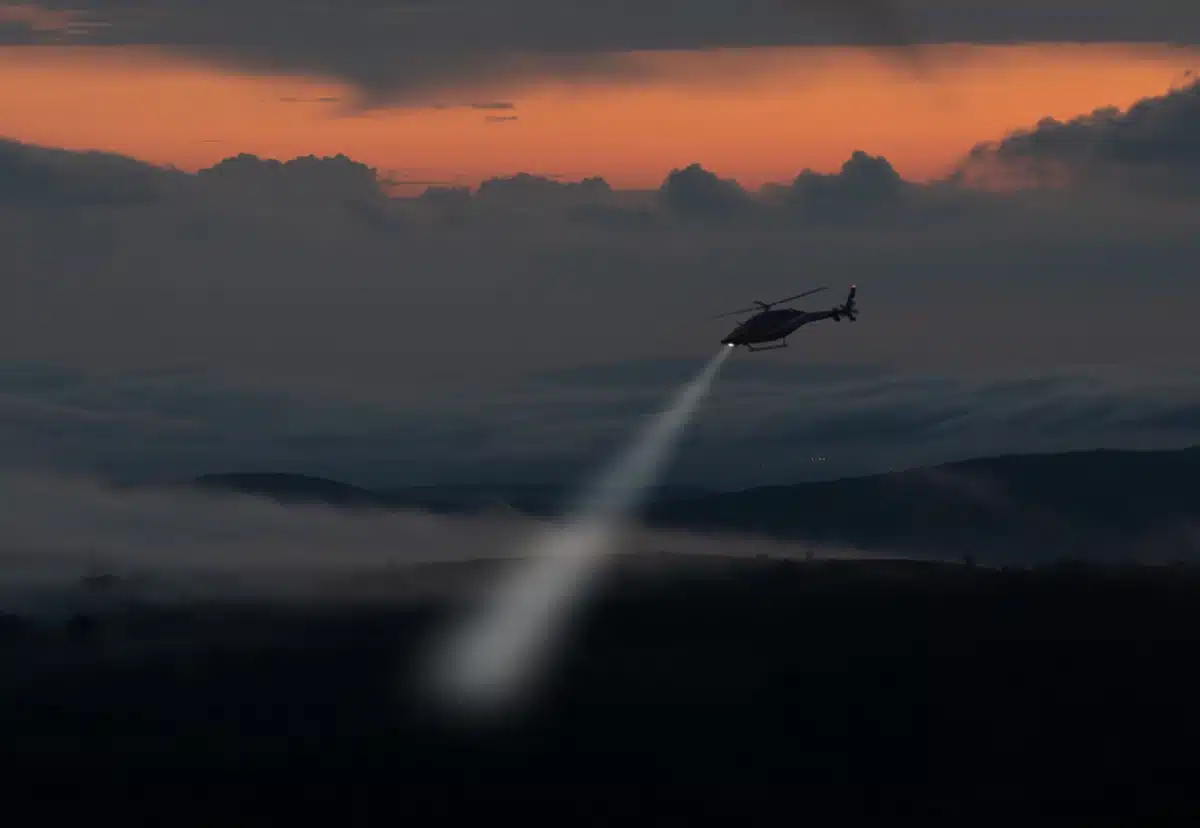
The Importance of Carrying a PLB/EPIRB: A Lifesaving Duo
While the innovative collaboration between One NZ and SpaceX promises groundbreaking advancements in satellite texting, it’s crucial not to overlook the unwavering importance of a Personal Locator Beacon (PLB) or an Emergency Position-Indicating Radio Beacon (EPIRB). In moments when every second counts, these devices have been proven time and again as invaluable tools for backcountry hunters, trampers, and those navigating perilous waters.
Simple to use and requiring minimal maintenance, PLBs like the ResQLink View and rescueME PLB1 can be lifesavers. There’s a deep reassurance in knowing that help is just a click away, even in the most remote and rugged terrains.
Satellite texting services, such as those soon to be offered through the collaboration of One NZ and SpaceX, certainly broaden our communication capabilities, allowing for more detailed exchanges with emergency responders. However, the ability to send out a critical, location-specific distress signal through an EPIRB or PLB remains unmatched in its reliability and simplicity. These devices transmit directly to a monitored satellite network and local aircraft distress frequency, ensuring that help is navigating towards you as swiftly as possible.
Technological advancements bring exciting possibilities, yet the importance of having a dedicated emergency beacon should never be underestimated. So, while it’s thrilling to think about the seamless connectivity and the expanded reach that satellite texting can offer, let’s always remember the proven life-saving technology that PLBs and EPIRBs represent. Carrying a new-age communicator and a traditional beacon could be your best strategy for safety and peace of mind during your adventures.
The Technical Side: How One NZ and SpaceX Technology Works
Reflecting on my numerous adventures in New Zealand’s pristine wilderness, I’ve always been aware of the thin line separating safety from peril. Introducing the One NZ and SpaceX collaboration promises to significantly fortify that boundary. This technology utilises the SpaceX Starlink constellation, a network of low Earth orbit (LEO) satellites, to provide unprecedented connectivity even in the most remote locations. These satellites communicate with ground stations operated by One NZ, ensuring a robust and resilient communication infrastructure.
Unlike traditional satellite messengers that primarily focus on emergency use, this new technology by One NZ and SpaceX heralds a new era of continuous and versatile communication. By leveraging the advanced capabilities of SpaceX’s satellite network, users can now send regular text messages and emergency SOS signals. This transforms the dynamic from a purely survival-oriented device to a comprehensive communication tool, crucial for everyday and emergency scenarios.
One of the standout features is its impressive reach. Whether deep in the backcountry on a tramping expedition or navigating the expansive waters surrounding New Zealand, you can rely on stable and reliable connectivity. This is a game-changer for safety, particularly when every second counts. Imagine being able to send a message detailing your exact predicament and receiving a coordinated response almost in real-time. It’s not just about surviving but staying connected and informed.
In essence, the One NZ and SpaceX collaboration is more than just a technical achievement; it’s a lifeline that provides unprecedented peace of mind. As someone who cherishes the great outdoors, understanding the technology behind it not only enhances trust in its capabilities but also underscores its profound impact on safety and connectivity in our adventures.
Affordable Safety: Cost Comparison of Emergency Communication Devices
Having a reliable means of communication is a luxury and a lifeline. The recent One NZ and SpaceX collaboration promises to make this lifeline more accessible, but how does it stack up against existing options?
Garmin, SPOT, and ZOLEO have set the benchmark high, offering robust solutions for sending distress signals and ensuring that help is always within reach. These devices, while reliable, often come with a hefty price tag and require monthly subscriptions that can add up over time.
The beauty of the One NZ and SpaceX partnership lies in its promise of more affordable safety. Monthly costs for satellite messaging services from this collaboration are set to be competitive with, if not lower than, current options.
The partnership between One NZ and SpaceX offers an exciting and potentially life-saving advancement in satellite messaging services. By aiming to provide cost-effective options, this collaboration promises to make emergency communication more accessible for individuals venturing into remote locations. Whether in the backcountry hunting, tramping, or out on the water, this service could bridge the gaps in connectivity, ensuring safety is within everyone’s reach without breaking the bank.
Teslong NTG100 Borescope: See INSIDE Your Gun! (Review)
The Teslong Borescope: It’s like a colonoscopy for your gun, but way less awkward and much more illuminating.
Compass Essentials: How to choose the right one for you tramping needs.
While it is very easy to just think that a GPS can replace a compass for many outdoor adventures, there are still some very valid reasons to carry a map and compass.
In close, should I aim high or low?
I hear the comment quite regularly – ‘I got in real close to the animal – but just couldn’t seem to get the bullets to go where I was aiming – I was so close, I must have had to aim lower, right?’
Well, no. If you aimed lower, there is a good chance you put a round under the animal – or worse still – into a leg.
But why? Oh. Maths!

